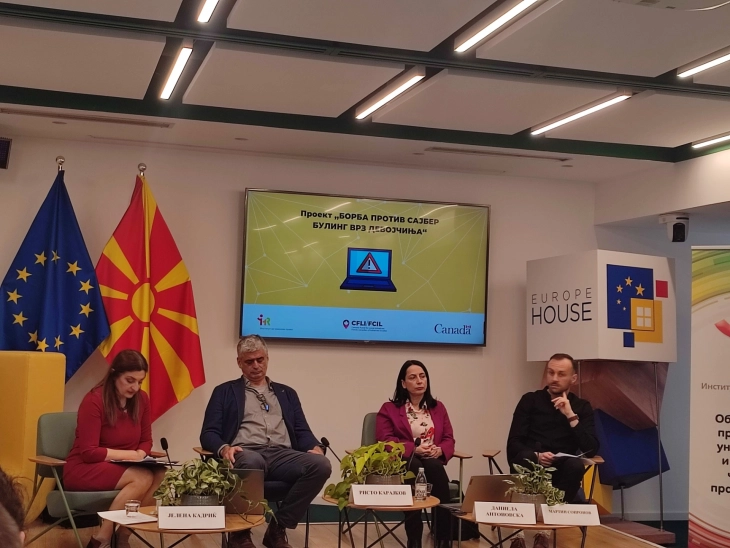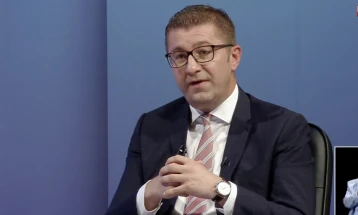Girls more subject to peer cyberbullying than boys: survey
- About 20 percent of students have been or maybe/probably are subject to peer cyberbullying in the past year. According to gender, girls have been the subject of peer cyberbullying to a greater extent than boys. Based on ethnicity, one third of Roma students have been subject to peer cyberbullying, which is significantly more than any other ethnic community, shows a survey conducted by the Institute for Human Rights (IHR) titled "Cyber-bullying in secondary schools in North Macedonia."
- Post By Ivan Kolekevski
- 13:53, 6 March, 2024

Skopje, 6 March 2024 (MIA) - About 20 percent of students have been or maybe/probably are subject to peer cyberbullying in the past year. According to gender, girls have been the subject of peer cyberbullying to a greater extent than boys. Based on ethnicity, one third of Roma students have been subject to peer cyberbullying, which is significantly more than any other ethnic community, shows a survey conducted by the Institute for Human Rights (IHR) titled "Cyber-bullying in secondary schools in North Macedonia."
The dominant form of cyberbullying, according to the survey, is gossip, making up a 35.8 percent of the total number of confirmed or possible cases. Gossiping significantly impacts girls, while boys are subject to unwanted messages on social media or being ignored/ excluded, compared to girls.
The survey was presented at Wednesday's event on "Combating cyber-bullying against girls" at Europe House Skopje.

IHR spokesperson Martin Sopronov said that peer cyberbullying most often happens among girls due to jealousy. Boys also subject girls to peer cyberbullying for fun or to exert dominance or power.
"Students believe that if professors and school staff recognize, even point out those who commit peer cyberbullying or bullying, due to their workload, they often refuse to take any action and let it happen spontaneously. Only if the situation escalates are they willing to take action," Sopronov noted.
Even if children are encouraged to report, he added, the process is not anonymous or protected, information spreads and victims are additionally subject to cyberbullying or bullying.
Gender equality expert Daniela Andonovska listed recommendations from the report that were directed at schools, social media, and online sites.
"Continuous education and improving students' digital skills is very important. Additionally, appropriate trainings for teaching staff and expert services, including psychologists and educators, is just as important. Another recommendation is to form heterogeneous student support groups," Andonovska stressed.
Majority of the peer cyberbullying happens on social media most often used by young people, for example Instagram.
Regarding the perception of who is more often a victim of cyberbullying based on gender, almost half of the students believe it is girls, and girls are much more inclined to consider themselves the subject of online peer violence.
The survey conducted within project "Combating cyber-bullying against girls" is financially supported by the Canadian Embassy in Belgrade, and aims to illustrate the presence of peer violence in schools, whether students are victims of bullying or are able to recognize bullying or cyberbullying in schools. The survey was carried out in 18 schools from the eight regions across the country, including 1,017 students in their third and fourth year of high school. Results show that students want and feel the need to discuss the topic of cyberbullying. ssh/ik/







